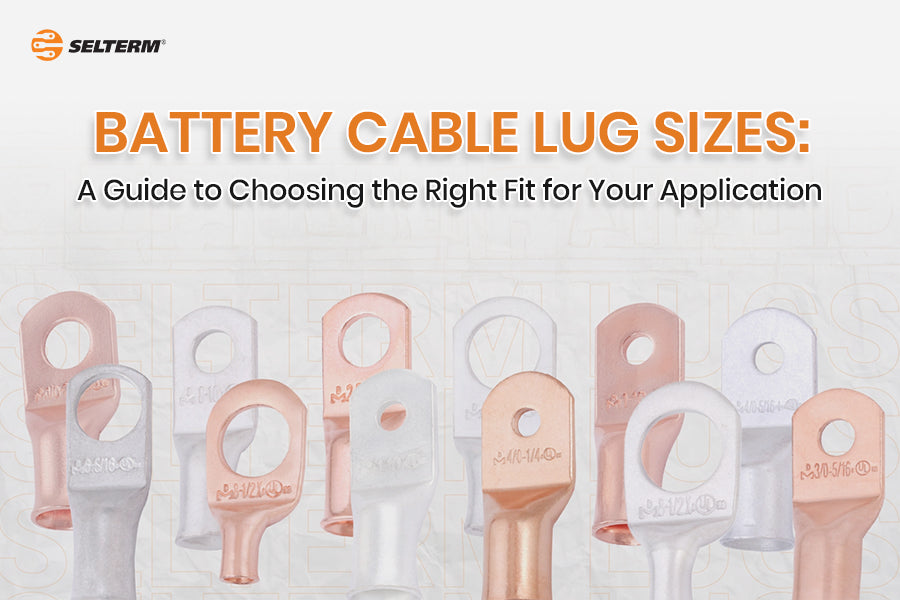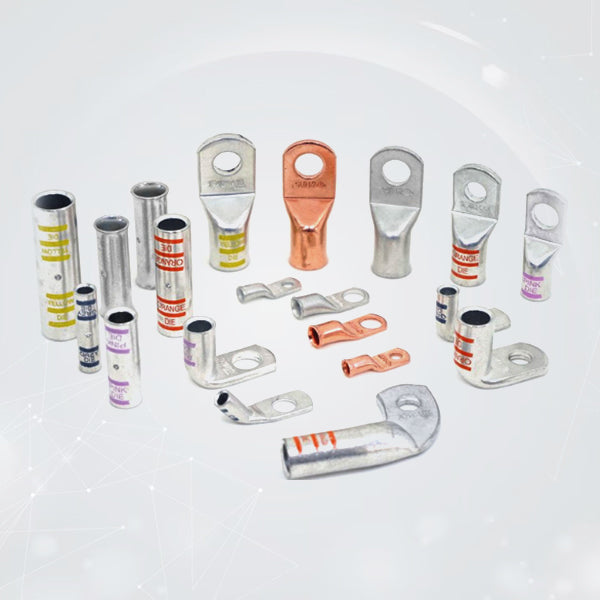
Battery Cable Lug Sizes: A Guide to Choosing the Right Fit for Your Application
Introduction:
Battery cable lugs play a crucial role in the proper functioning of electrical systems, providing a secure and efficient connection between batteries, inverters, and various electrical devices. The choice of the right lug size is essential for ensuring optimal performance, safety, and longevity of your electrical connections. In this blog post, we'll explore the significance of battery cable lug sizes and provide insights into their applications.
Understanding Battery Cable Lug Sizes:
Battery cable lugs come in various sizes, typically measured in American Wire Gauge (AWG) or millimeters squared (mm²). The size of the lug corresponds to the gauge or diameter of the cable it can accommodate. Choosing the correct size is crucial, as using a lug that is too small can result in poor conductivity, increased resistance, and potential overheating.
AWG vs. mm²:
American Wire Gauge (AWG) is a standard measurement for the diameter of electrical conductors. Smaller AWG numbers represent larger cable diameters. SELTERM marine battery cable lugs are offered for 8 AWG – 250 MCM wire sizes. With 8 Gauge being the smallest and 250 MCM being the largest.
Millimeters squared (mm²) is a metric measurement commonly used for cable sizes. Larger mm² values indicate thicker cables. While SELTERM battery cable ends are designed for use with gauge-size cables, one can use these ring terminals with metric cable sizes as well, with a usable range of 10 mm2 – 150 mm2.
Matching Lug Size to Cable Size:
Selecting the right lug size involves matching it to the diameter of the cable. The lug should snugly accommodate the cable without leaving excess space. While SELTERM wire lugs are sized to work with S.A.E battery cables, one can use other types of cables such as oversized audio cables, CCA cables, OFC cables, Marine boat cables, etc. However, it is important to verify the conductor diameter and match it with the correct terminal which uses non-standard cables. There might be a need to use car audio battery lugs that are one or two sizes larger with certain cables of non-standard stranding.
Use manufacturer-provided charts or calculators to determine the appropriate lug size based on the cable gauge or mm². SELTERM provides a very descriptive chart of cable size compatibility to cross different sizes of golf cart battery cable lugs with corresponding wire sizes from different brands or cable classes.
Applications of Battery Cable Lug Sizes:
-
Automotive Batteries:
- In vehicles, battery cable lugs connect the battery to the starter, alternator, and other electrical components.
- Car audio battery lugs and golf cart battery cable lugs must be chosen based on the specific requirements of the vehicle and its electrical system. -
Solar Power Systems:
- Battery banks in solar power systems require robust solar wire lugs to ensure efficient energy transfer.
- Consider factors such as the system's voltage, current, and environmental conditions when selecting lug sizes. -
Marine Applications:|
- In marine environments, marine battery cable lugs are exposed to corrosion from saltwater. Choosing corrosion-resistant materials is essential.
- Lugs must also meet safety standards for marine electrical systems. -
Industrial Settings:
- Battery-powered equipment and machinery in industrial settings demand reliable cable connections.
- Consider factors such as load currents, temperature, and vibration when selecting lug sizes for industrial applications.
Conclusion:
Choosing the right battery cable lug size is a critical step in ensuring the efficiency and safety of electrical connections. Whether you're working on an automotive, solar, marine, or industrial project, understanding the correlation between cable size and lug size is key. Always refer to manufacturer guidelines, consult sizing charts, and prioritize quality materials to guarantee optimal performance and longevity in your electrical systems.





